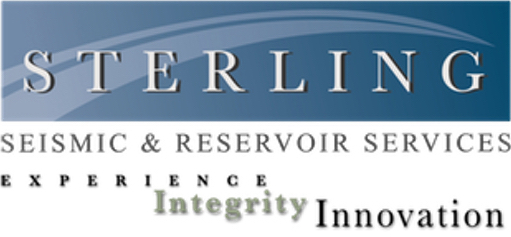Sterling focuses on innovative seismic processing solutions for 2D, 3D and multi-component data. Customers rely on the results of our services for conventional and unconventional plays across the United States where seismic data is a critical tool for successful exploration and development.
We focus on quality and accuracy in the seismic data processing workflow, from the basic steps to the most advanced imaging techniques.
 Our interactive seismic processing software is SeisSpace® ProMAX® from Landmark. Sterling’s proprietary algorithms augment state-of-the-art capabilities to provide a full range of problem-solving technology for our clients’ data challenges.
Our interactive seismic processing software is SeisSpace® ProMAX® from Landmark. Sterling’s proprietary algorithms augment state-of-the-art capabilities to provide a full range of problem-solving technology for our clients’ data challenges.
3D Processing and Reservoir Solutions
Leading E&P companies and top unconventional resource players recognize Sterling as a leader in 3D imaging and reservoir solutions. Anisotropic time and ‘data driven’ depth imaging technologies provide differential value for clients. If your project goals require improved imaging for geosteering long laterals, better fault definition for risk reduction, increased stratigraphic resolution, assessing and correcting anisotropy for stress-fracture information, and preserved amplitude processing for subsequent AVO-rock properties investigations, our technologies and expert processing can provide the solution.
2D Expertise
Clients seek out Sterling’s specialized expertise in processing 2D datasets, with proven workflows and highly experienced staff who focus on the unique challenges of 2D processing. For many of our clients, 2D is a stepping stone and learning process for future development. At Sterling, we value 2D projects and the important role they play in the exploration process.
Multi-component processing
Processing of multi-component data focuses on improved imaging using both compressional and shear wave information. Sterling has capabilities for converted wave land processing, enhancing the quality of the shear wave to match the expectations of P-wave processing. Customers improve their ability to predict reservoir behavior with better lithology definition and fluid identification, along with improved stress determination and fracture characterization.
Multi-component processing technologies:
- Component rotations (radial and transverse)
- ACCP binning (for statics and initial velocities)
- S-wave statics (common-receiver analysis)
- Velocitor™ interactive velocity analysis
- S-wave splitting analysis
- Tsunami™ Pre-Stack Kirchhoff PS Time Migration
- S-wave velocity and/or eta scans
- Anisotropic, curved-ray PS time migration

